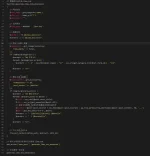As a WordPress enthusiast, I’ve gathered some insights while building my blog, particularly on optimizing website performance and SEO. I hope these experiences can be helpful to others.
First, although WordPress comes with powerful built-in features, its code is often quite “heavy,” which can slow down page loading. Therefore, during the site setup, I try to simplify redundant code, remove unnecessary plugins and features, and retain only the core functionality. Furthermore, I manually write the `<head>` section in the template, including only essential meta tags, CSS, and JS, while avoiding the use of `wp_head()` or other default WordPress header functions. This prevents loading a lot of unnecessary code and references, making pages lighter, faster, and improving user experience.
Example:

For SEO and AI optimization, I recommend adding Schema.org markup to your website so that Google can better understand your content. Additionally, creating an llms.txt file helps AI tools crawl and analyze your site, which is useful for content indexing.
To automate this, I’ve written a snippet in `functions.php` to generate Schema.org markup and the llms.txt file:
llms

Schema.org

To further improve search engine indexing, I install the IndexNow plugin, which allows quick submission of site updates to Bing, accelerating the indexing of new content. At the same time, to enhance page loading speed, I use WP Super Cache, which generates static pages from dynamic content and significantly reduces server load.
Regarding the server environment, I recommend installing OPcache and APCu for PHP, which can significantly improve PHP execution efficiency when paired with WordPress. Additionally, ImageMagick can handle images more efficiently, optimizing loading performance.
Finally, after launching the site, don’t forget to regularly update content and submit your sitemap. Keeping content fresh and search-engine friendly is crucial for long-term traffic and ranking.
In summary, building a high-performance WordPress blog revolves around streamlining code, implementing proper caching, and optimizing SEO and AI indexing. Once these basics are in place, even a simple blog can achieve smooth performance and better search visibility.
Here’s an example of my WordPress blog for reference:
WPS Office Download

 platform-wps.cn
platform-wps.cn
First, although WordPress comes with powerful built-in features, its code is often quite “heavy,” which can slow down page loading. Therefore, during the site setup, I try to simplify redundant code, remove unnecessary plugins and features, and retain only the core functionality. Furthermore, I manually write the `<head>` section in the template, including only essential meta tags, CSS, and JS, while avoiding the use of `wp_head()` or other default WordPress header functions. This prevents loading a lot of unnecessary code and references, making pages lighter, faster, and improving user experience.
Example:

For SEO and AI optimization, I recommend adding Schema.org markup to your website so that Google can better understand your content. Additionally, creating an llms.txt file helps AI tools crawl and analyze your site, which is useful for content indexing.
To automate this, I’ve written a snippet in `functions.php` to generate Schema.org markup and the llms.txt file:
llms

Schema.org

To further improve search engine indexing, I install the IndexNow plugin, which allows quick submission of site updates to Bing, accelerating the indexing of new content. At the same time, to enhance page loading speed, I use WP Super Cache, which generates static pages from dynamic content and significantly reduces server load.
Regarding the server environment, I recommend installing OPcache and APCu for PHP, which can significantly improve PHP execution efficiency when paired with WordPress. Additionally, ImageMagick can handle images more efficiently, optimizing loading performance.
Finally, after launching the site, don’t forget to regularly update content and submit your sitemap. Keeping content fresh and search-engine friendly is crucial for long-term traffic and ranking.
In summary, building a high-performance WordPress blog revolves around streamlining code, implementing proper caching, and optimizing SEO and AI indexing. Once these basics are in place, even a simple blog can achieve smooth performance and better search visibility.
Here’s an example of my WordPress blog for reference:
WPS Office Download

WPS中文版下载
WPS中文版办公软件,完美适配Windows、Mac电脑端以及手机、平板等移动设备,满足跨设备办公需求。无论文字写稿、表格算数据、演示做课件,不用切换软件就能一站式搞定。界面简洁无冗余,新手也能快速上手,很受用户喜欢。在本站获取免费下载。

